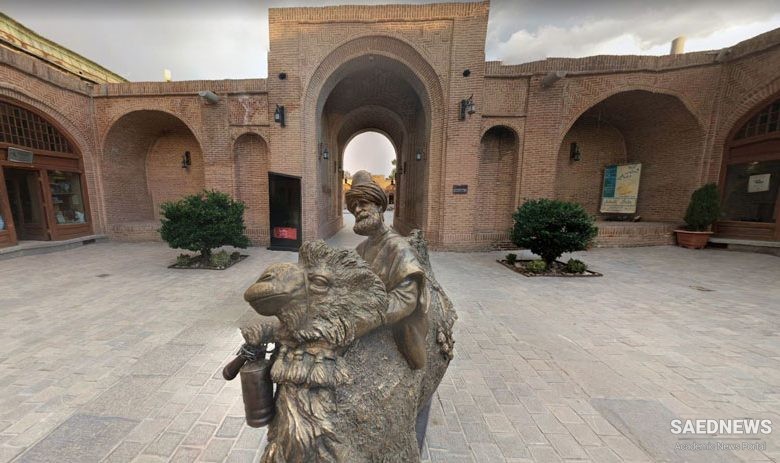Shah Tahmasp carried out extensive civil works in the city and one of them was establishing many baths. This bath is attributed to both Safavid and Qajar periods. However, there is no inscription containing the date of construction, but regarding the painting layers and the style of its decorations, it seems to be related to Safavid period. This bath-museum has approximately 1200 square meter built-up area and is located in one of the old districts of the city named Akhund.
The whole building of the bath is placed in the basement and it reaches the entrance of the bath or Sarbineh through thirteen downward stairs. Some of the domes of the building are about sixty to one hundred and ninety centimeters higher than the ground level. This method was used for both bringing the Qanat water to the bath and minimizing the heat exchange between the internal and external parts of the museum.
In fact, the soil acted as insulation. In addition, being located the building in the heart of the earth increased its resistance to earthquake risk. The main spaces in the old baths are separated in such a way that the heat and humidity in each section are adjusted to the adjacent space to prevent people to be sick by suddenly entering a cold room after a warm bath.

This matter has been properly considered in the Bolour bath. The needed water of bath in the past was supplied from two Qanats of Akhund and Shah reached the desired place through clay water pipes by the pressure resulted from the level difference.
The heat needed in the bath was also created through burning organic materials like thorns and thistles, dry leaves and animal wastes in the stokehold. Stokehold was placed outside the living space of the bath underneath the pot of hothouse in the bath. This building was inscribed on the index of National Heritages of Iran in 1380 SH and it was later converted into the Stone Museum.


 Rudkhan Castle, Fuman, North Iran
Rudkhan Castle, Fuman, North Iran














































